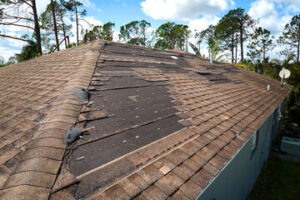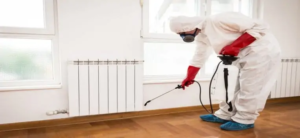Unlike giving a room a new paint job or replacing cabinet doors, roofing repairs, and replacements are substantial home improvement projects that require careful consideration. Choosing the right option will impact the comfort and value of your home for years to come.

Your decision should consider the following factors: the extent of damage, budget, plans for your home, and more. Here are some factors to consider from Ellingson Roofing LLC to help you decide between repair and replacement:
Cost
Re-roofing is typically less expensive than a complete roof replacement, especially when it involves covering only localized damage. This home improvement project is a great option for homeowners with tight budgets that don’t allow them to invest in a new roof. However, re-roofing only provides temporary relief and does nothing to address underlying issues. It also voids or shortens the warranty on the new shingles and may not protect the home as well as a full roof replacement. Additionally, since the old shingles are covered up, there’s no way to know what other damage exists under the surface. This could lead to costly leaks down the road.
Warranty
When it comes to choosing between repair and replacement, the warranty is a major factor. A quality warranty can give you peace of mind and help you decide whether the work is worth it. However, not all warranties are created equal. You should be aware of what each type covers, so you can choose the one that’s right for you.
There are two main types of warranties: workmanship and manufacturers’ material warranties. The former covers the installation process, and the latter is for the roof’s materials. You can also get system warranties, which combine both and offer robust protection for your home. These are available from leading manufacturers and require certified contractors that follow their specific standards.
Manufacturers’ warranties cover a wide range of issues, including defects in shingles. Depending on the manufacturer, they can last for up to 30 years and include full replacement costs. Some even offer a lifetime warranty. However, it’s important to understand that these warranties are not a substitute for routine maintenance. Failing to carry out regular maintenance can void your warranty.
In contrast, a contractor’s workmanship warranty only covers the work that the contractor performs, and it usually lasts for just one or two years. In addition, the warranty does not cover damage caused by “Acts of God,” such as high winds, extreme weather conditions, and puncture damage from tree branches or animals. Moreover, many roofing contractors only offer their workmanship warranties and will not transfer them to the new homeowner.
Appearance
Unlike giving your kitchen cabinets a new paint job, re-roofing is a large home improvement project that can have a noticeable impact on the exterior of your house. Re-roofing is a great way to give your roof a facelift or match it to new additions to your home. However, if there is significant structural damage underneath the shingles, it is usually best to replace your entire roof. Additionally, re-roofing can also void the warranty of your new shingles and doesn’t provide as much protection. As a result, it is not as durable as a replacement.
This is important to consider because the appearance of your roof can affect your property value and curb appeal.
Energy Efficiency
Modern roofs are designed to be energy efficient and can save you money on your utility bills. If your old roof is outdated, a replacement may be necessary to make sure that your home has the energy efficiency you want and need.
If your roof is at the end of its lifespan, a replacement can give you a better quality roof with more advanced materials that offer better insulation. This can also save you money on your energy bills by reducing heating and cooling costs.
Re-roofing is the act of placing a new layer of shingles over existing shingles. It is typically cheaper and faster than a roof replacement, but it won’t last as long since it only covers up existing problems. Re-roofing can also void the warranty on your new shingles and doesn’t allow you to examine the structure for hidden damages that could require a replacement.
In the end, it is important to remember that repairing or replacing your roof is more than just a home improvement project – it’s an investment in the safety and security of your family. Consider all of these tips when deciding between repair and replacement to ensure you’re getting the most out of your roofing system.
A roofing estimate should clearly state the cost of each component, including labor and materials. This will allow you to compare estimates from different contractors and choose the best one. A reputable contractor will be willing to explain how they came up with their price. For example, if a contractor says the price of shingles is $50 per square foot, ask them to break down the total cost for you. This should include the cost of the shingles as well as the labor to install them.
It’s important to carefully inspect the whole roof before preparing an estimate. There may be damage you are unaware of, such as rot or algae. It’s also a good idea to check the condition of all vents, chimneys, plumbing vents, skylights, and solar panels. A thorough inspection will also reveal the number, condition, and length of eaves and valleys, as well as any unusual roof features.
Getting a roof replacement or repair can be a disruptive project. It’s best to schedule the work when family members aren’t home. The noise can make it difficult for infants to sleep and young children to concentrate. It’s also important to keep pets indoors during the work. They can get in the way and be injured by shingle debris. If you can’t find a safe place for them, it might be better to have them stay at Grandma’s.
It’s a good idea to ask for proof that the roofing contractor is licensed and insured. This will help protect you against fly-by-night contractors who aren’t interested in doing the job correctly or even finishing it. A reputable contractor should have no problem emailing you a copy of their insurance coverage and a current certificate of insurance. You should also be able to verify their business with the state and federal directories.
The roof is a crucial component of any home and plays an essential role in defending against damaging weather. While no roof lasts forever, a professional inspection and timely repairs can minimize damage, resulting in a longer lifespan for the entire roofing system. Professionals can identify hidden issues that could lead to costly damages, such as water leaks and mold growth.
A professional inspection will include a complete evaluation of the structure, materials, and integrity of a home’s roof. Qualified roofing professionals have the training and experience to identify issues that may not be visible from a surface-level examination. For example, a professional will look for punctures caused by hail or other debris that may not be immediately obvious, and they will check the interior of the attic for evidence of leaking or mold.
In addition, a qualified roofer will check the flashing around the chimney and the areas where the roof meets the walls of the house to ensure that these connections are strong and secure. They will also evaluate the gutters and downspouts for signs of disconnection or rust, as these are important in drawing water away from the roof.
One of the benefits of a professional roof inspection is that it can help homeowners reduce unnecessary claims when filing insurance coverage for storm damage. When an insurance company sees that a property owner has consistently had their roof inspected and maintained, they are much more likely to grant fair compensation for repair or replacement costs.
A regularly inspected and well-maintained roof will enhance energy efficiency, curb appeal, and overall value of a home, increasing the likelihood that it will be a desirable investment for potential buyers. In turn, this can increase a homeowner’s property tax deduction and provide financial savings over time. So, why not invest in a professional roof inspection today and make sure that your home’s most important asset is protected? After all, an ounce of prevention is worth a pound of cure!
